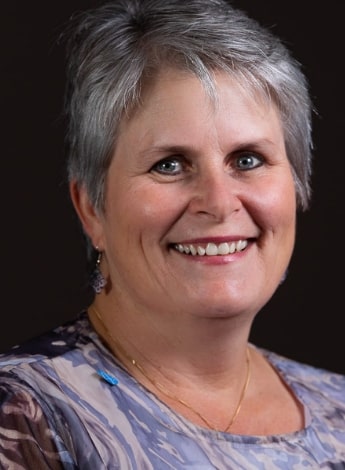
The rural voice

Australians in regional areas have difficulty accessing physiotherapy services compared to their urban counterparts. A rural perspective is needed if we are to make healthcare more equitable.
Over seven million Australians live outside of major metropolitan centres.
The vastness of our nation and its population density and distribution mean that we have to address issues differently in rural Australia.
Examples include composite classes in schools; community transport buses for community services where there is no other form of public transport; small, community-built residential aged care facilities; and multipurpose hospital services.
There are many factors that may contribute to poorer health outcomes in rural Australia.
These are summarised well in the Rural Health in Australia Snapshot 2021, which I urge you to view and absorb.
It is not physically possible to have a physiotherapist meet in person with every individual who needs physiotherapy services in rural Australia at any one moment in time.
Defining ‘rural’ and distinguishing a cut-off point are always challenging when it comes to the distribution of policy and services.
The Modified Monash Model is helping with this—see the National Rural Health Alliance’s workforce mapping tool.
There is still much work to do in workforce data capture and analysis to understand the full picture.
The Australian Bureau of Statistics has a classification system based on geography and there is an interactive network map for Aboriginal and Torres Strait Islander health services in each state.
The APA and other health peak bodies aspire to equitable access to healthcare (including physiotherapy) for all Australians.
This is a vision I wholeheartedly support.
You could argue that we already have this.
The people who live in rural areas just need to travel or use telehealth to reach services and there are subsidies for their travel and accommodation.
Another comment I have frequently heard is ‘They choose to live out there, therefore they choose to travel to appointments and specialists’.
This is true and rural Australians realise that but can we consider the bigger picture?
All Australians like to have fresh food on the table.
The people in rural Australia make up the communities that produce our food and much of Australia’s wealth in the form of exports, energy and fresh produce.
Regional business and employees also pay tax.
They pay for health services that are difficult to access.
They live in and support communities that have social problems equivalent to urban areas but in a very different context.
Where we live should not be a barrier to accessing the health services we need.
The way we deliver these services may differ according to context.

Ellen McMaster is a rural generalist physiotherapist and chair of the National Rural Advisory Committee.
What does ‘difficulty accessing services’ look like?
In Scenario A, Bill had bypass surgery four weeks ago, is home and feels pretty good.
He lives alone, is managing at home and is not allowed to drive for another two weeks.
He lives 150 kilometres away from the centre that offers the appointments he needs and doesn’t like to ask for help.
In Scenario B, Jen is a young mum with a pelvic floor problem. When Jen goes to town (110 kilometres away), she has time to do five things.
The jobs on the list are to see the specialist, to get parts for the tractor, to do the fortnightly $500 grocery shop, to go to a physiotherapy appointment, to go to a hair appointment and to buy a birthday present for her eight-year-old son.
Jen needs to be home in time for the school bus drop-off.
The bus stop is a 20-minute drive from the house and in the middle of nowhere—Jen can’t be late.
What jobs would you choose?
Of course Jen misses out.
But is there another way?
When the choice is telehealth or nothing, telehealth is superior by far.
The hybrid model, which involves escalation to in-person services when the need is identified via a virtual consultation, is perhaps the optimal option in rural Australia.
The rural context also varies, from remote Aboriginal communities with a community nurse and an Aboriginal and Torres Strait Islander Health Worker to large regional towns that have the full complement of medical and nursing staff and allied health providers in both public and private settings.
There are many other combinations on the spectrum of healthcare between these two examples.
One solution will not fit all communities.
To avoid duplication, to address gaps and to optimise the possibility of sustainable services, communities need to be engaged.
This is how the Aboriginal Community Controlled Health Organisation model works—with blended funding; with strong, well-informed governance; and by meeting community need.
If decision-makers are to genuinely factor in the context and variance of rural Australia to give all Australians equitable access to healthcare, the rural voice is essential.
>> Ellen McMaster APAM is a rural generalist physiotherapist from a farming background and lives in the lands cared for by traditional custodians the Wiradjuri Nation in western New South Wales. Ellen is the chair of the APA’s National Rural Advisory Committee.
© Copyright 2024 by Australian Physiotherapy Association. All rights reserved.





